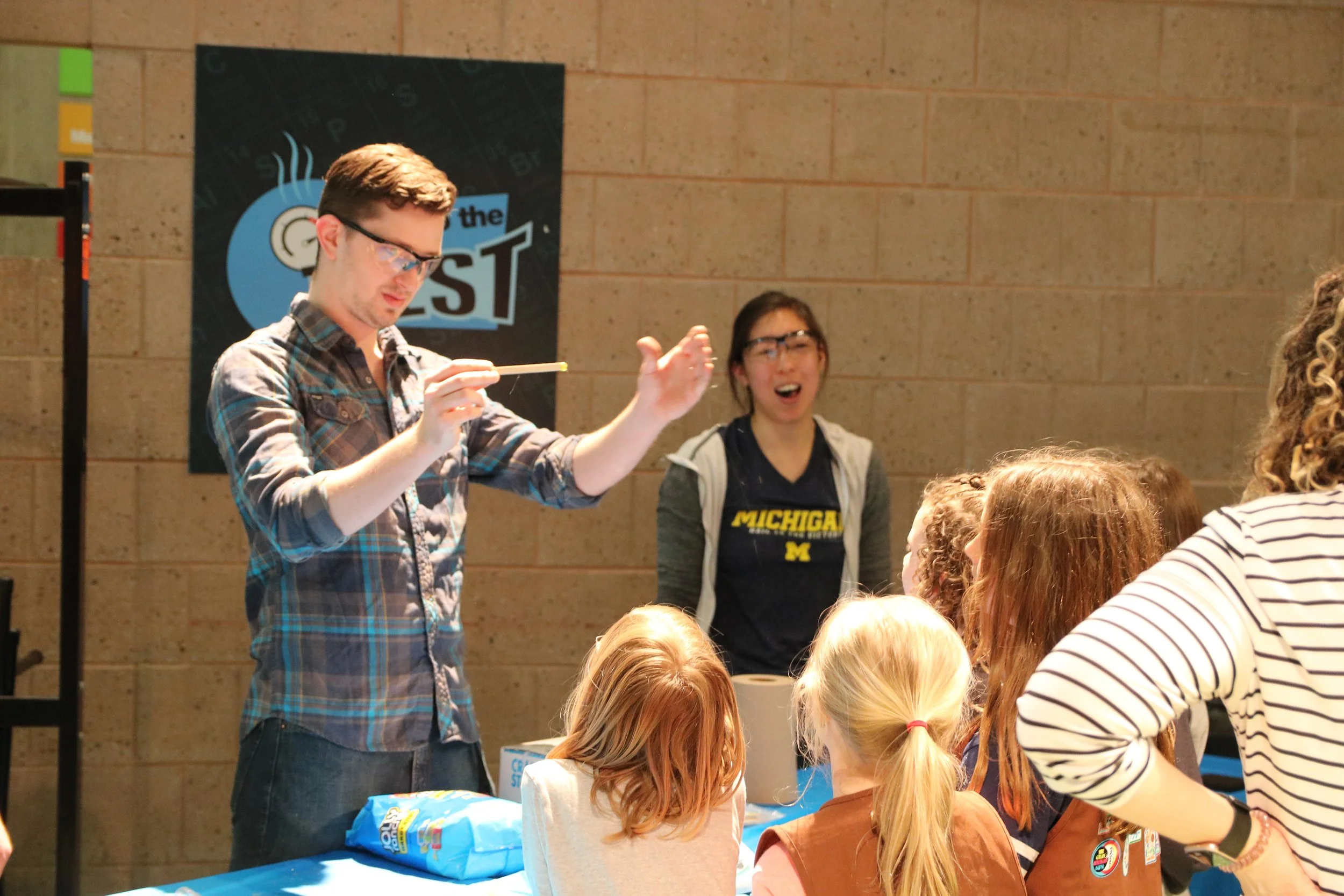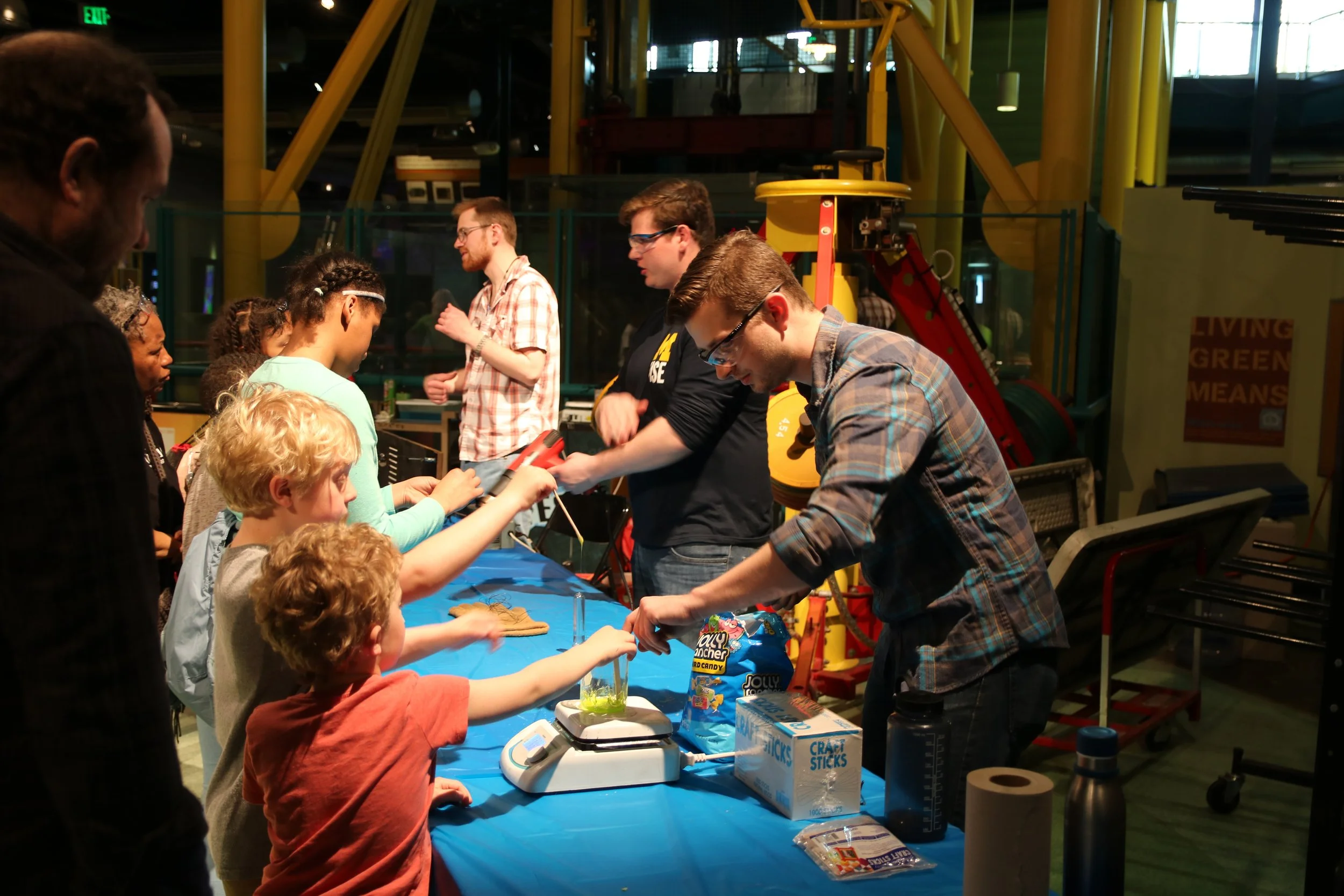
Outreach



During my PhD, I co-founded the materials science and engineering department’s graduate student outreach program. The goal of this program was to both expose students to materials science and to help teachers meet their classroom objectives in ways that they wouldn’t otherwise be able to. For this program, we had to build relationships with local and Detroit-area K-12 schools and work with them to build our lessons around the Michigan science standards, as well as the needs of the class. Our goal was to travel to several schools multiple times a year and teach classes using our demos that meet the Michigan high-school science standards. In the 2019-2020 school year, we were able to reach almost 1000 students.
During the COVID-19 pandemic, these outreach efforts moved entirely virtual, where we would livestream these same events to K-12 classrooms. Additionally, with both our local department and ASM international, we are ran workshops for high school teachers where we equipped them with the tools to teach independent MSE courses and labs in high school, giving high schoolers direct exposure to MSE. We also collaborated with the Univ. of Michigan Museum of Art (UMMA) to teach classes for museum guides and develop materials to teach the public about ancient materials science in art, such as blacksmithing, pottery, etc.



From 2017 to 2020, I helped to design and teach lessons for the REACT program twice a year, which funds Michigan teachers in lower income school districts to come to UM, providing them with lessons and supplies to teach materials science in their classrooms. During the same period, I helped organize and run events for the FEMMES (Women+ excelling more in math, engineering, and the sciences) program 2-3 time per year, where we would bring in girl scout troops and female/LGBT+-focused after school programs to teach fun classes about chemistry and materials science.
For 3 years, I was part of the ACerS student leadership, where I was on a committee to distribute lesson plans and materials to underfunded K-12 classrooms on a national scale. The infrastructure for funding and the kits themselves was already run by the society and our task was increasing teacher awareness of these programs. We started by using the contacts of the outreach programs at our own universities and by the end of my time there we were enlisting many other students and professors active in the society to pass on contact information for their own local K-12 schools.